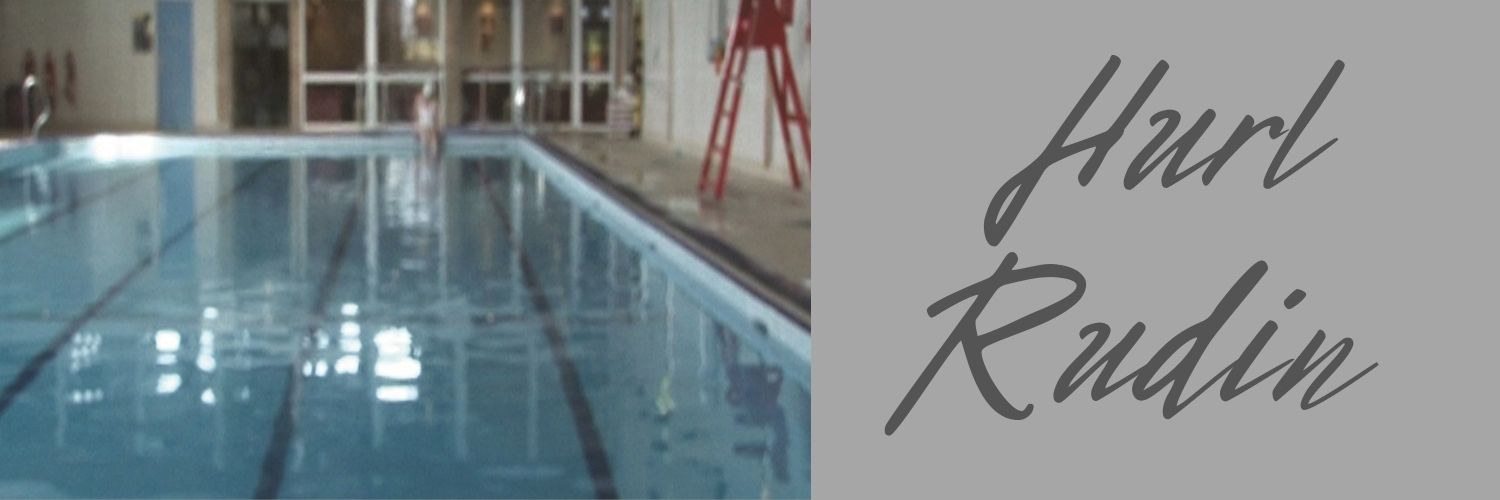Topsoil is my latest work. The first one person show in many years, although saying that I feel a tad uncomfortable, as I believe my collaboration with Therry Rudin, which has formed the major part of my work over the past number of years, is done in a parallel and participatory way, rather than a traditional collaboration. In other words, while we share ideas, concept and research, as the work begins to take shape, we enter our own spaces as our methodologies and outcomes are completely different. As a result we normally show two distinct bodies of work out of the same root form.
In 2011 was awarded a solo show for an Individual by Offaly Co. Council, Arts Office. Aras an Chondai, Tullamore, Co. Offaly. Thanks to this, I found myself heading off on this individual and somewhat lonely journey in June of last year.
Concept
This past three years found me making some big changes in my life when I left Dublin and came to live in Ballybritt, Co. Offaly, Although undoubtedly very beautiful, I find the remote landscape lonely, even frightening, especially in winter. My nose is right against the window of this dense and often misty place.
Our house lies beside the ruins of an old O’Carroll castle, where reputedly a fierce battle was fought. A Standing Stone sits nearby, marking the spot where a chieftain was slain. This history, the dense woodlands, the night sky, and the remains of our beautiful old Ash tree which fell during a raging storm last winter, formed my thinking for this exhibition.
For the first time since I was a child I have time all to myself. I have begun to paint more slowly, to rework and use glazes. I began to mix my own my paint, using pigments, which prompted me to discover out how these pigments were made. This research drew me into the study of alchemy and I learnt about the Philosopher’s stone and the quest to transmute base metals into gold or silver. I struggled to portray an essence, in fact, a transmutation, of all that I have seen and experienced, over this past year in Ballybritt.
Patricia Hurl Nov. 2011
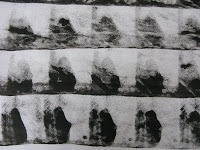
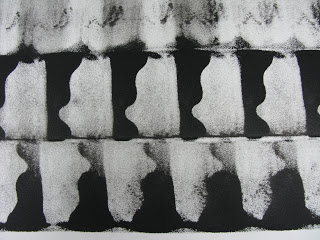
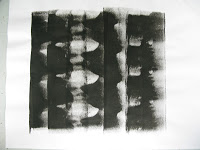

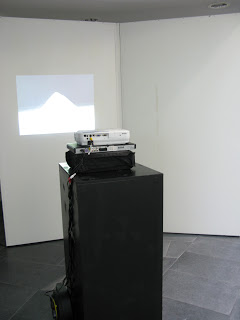
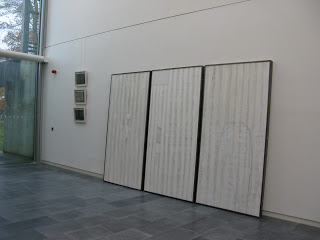
“I've seen things you people wouldn't believe. Attack ships on fire off the shoulder of Orion. I watched c-beams glitter in the dark near the Tanhauser Gate.
All those moments will be lost in time, like tears in rain. [pause] Time to die."

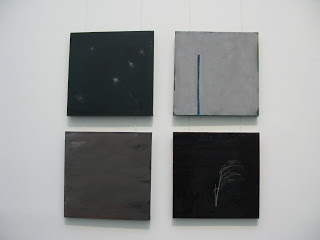
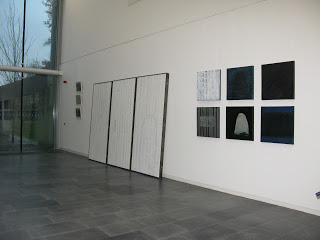
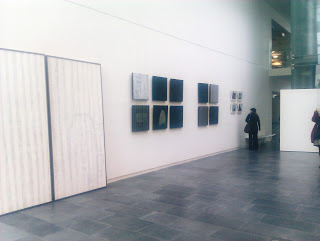
'I’ve Seen Things'
In Blade Runner, the dying replicant Roy Batty introspectively says the phrase, during a rain downpour, moments before his own death:
In Blade Runner, the dying replicant Roy Batty introspectively says the phrase, during a rain downpour, moments before his own death:
“I've seen things you people wouldn't believe. Attack ships on fire off the shoulder of Orion. I watched c-beams glitter in the dark near the Tanhauser Gate. All those moments will be lost in time, like tears in rain. [pause] Time to die,
Based on his Bußlied, Tannhäuser became the subject of legend, first attested in 1430, propagated in ballads from 1450. The legendary account makes Tannhäuser a knight and poet who found the Venusberg, the subterranean home of Venus, and spent a year there worshipping the goddess.
After leaving the Venusberg, Tannhäuser is filled with remorse, and travels to Rome to ask Pope Urban IV if it is possible to be absolved of his sins. Urban replies that forgiveness is as impossible as it would be for his papal staff to blossom. Three days after Tannhäuser's departure Urban's staff blooms with flowers; messengers are sent to retrieve the knight, but he has already returned to Venusberg, never to be seen again.[1]
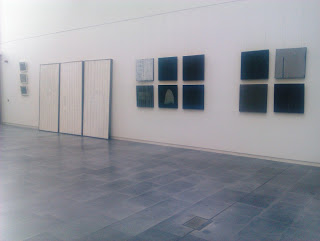

The Great Work (Latin: Magnum opus) is an alchemical term for the process of creating the philosopher's stone. It has been used to describe personal and spiritual transmutation in the Hermetic tradition, attached to laboratory processes and chemical color changes, used as a model for the individuation process, and as a device in art and literature. The magnum opus has been carried forward in new age and neo-hermetic movements which sometimes attached new symbolism and significance to the processes. It originally had four stages:[1][2]
0.nigredo, a blackening or melanosis
0.albedo, a whitening or leucosis
0.citrinitas, a yellowing or xanthosis
0.rubedo, a reddening, purpling, or iosis
The origin of these four phases can be traced at least as far back as the first century. Zosimus of Panopolis wrote that it was known to Maria the Jewess.[3] After the 15th century, many writers tended to compress citrinitas into rubedo and consider only three stages.[4] Other color stages are sometimes mentioned, most notably the cauda pavonis (peacock's tail) in which an array of colors appear.
The magnum opus had a variety of alchemical symbols attached to it. Birds like the raven, swan, and phoenix could be used to represent the progression through the colors. Similar color changes could be seen in the laboratory, where for example, the blackness of rotting, burnt, or fermenting matter would be associated with nigredo.

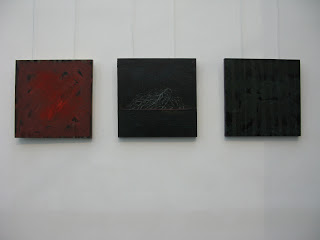
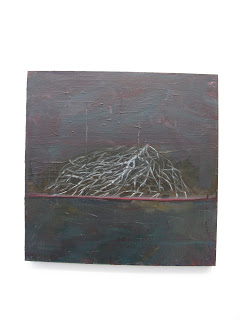

Red Heart of Antares
Red supergiant gleaming redly at the scorpion's heart, has a color similar to Mars.
ANTARES (Alpha Scorpii). A brilliant jewel set within the Milky Way, Antares guides us to one of the great constellations of the sky, the Zodiac's Scorpius (or Scorpio), the celestial scorpion, one of the few constellations that actually looks like what it represents. Antares, a class M (M1.5) red supergiant gleaming redly at the scorpion's heart, has a color similar to Mars. Since it is found within the Zodiac, which contains the apparent path of the Sun and planets, it is commonly mistaken for the red planet, a fact shown by its name, Antares, or "Ant-Ares," which means "like Mars," "Ares" being the Greek name for the god of war. This magnificent first magnitude (typically 0.96) star, shining opposite Betelgeuse, its counterpart in Orion, is ranked the 15th brightest in the sky.
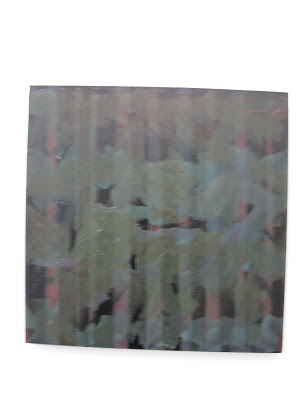
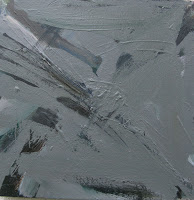
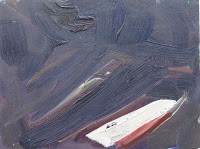
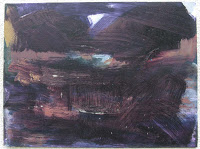
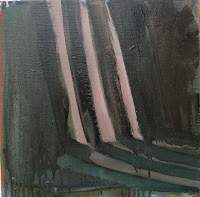

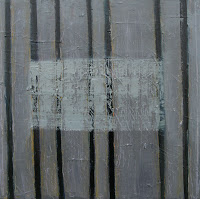
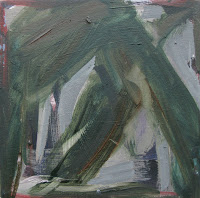
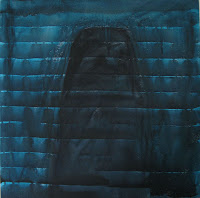
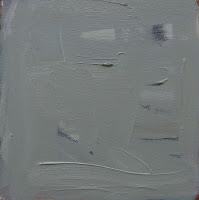
Titles of Work
-
Field of Yellow Ochre, Mars Violet Deep and Burnt Umber
-
Field of Cinnabar, Cobalt Violet, Magenta and Zinc White.
-
Field of Raw Umber, Indian Yellow, Alizarin Crimson and Ultramarine.
-
Triptych:
-
Under Scorpio’s Gaze: Fields of Quicksilver*: Terre Verte , Oxide of Chromium and Zinc White.
-
Titanium Field
-
Field of Mercury.
-
The Chieftain’s Stone
-
A Cloak for the Chieftain
-
Warrior’s Field 1
-
Warrier’s Field 2
11 -14. The Weather Tree Series
15 -18. Studies
19 -20. Monoprints
-
The Philosophers Stone
-
Red Heart of Antares
-
Onyx Forest
-
DVD Under Scorpio’s Gaze
* To produce liquid (quicksilver) mercury, crushed cinnabar ore is roasted in rotary furnaces. Pure mercury separates from sulfur in this process and easily evaporates. A condensing column is used to collect the liquid metal, which is most often shipped in iron flasks.
Pigments
Naturally occurring pigments such as ochres and iron oxides have been used as colorants since prehistoric times. Archaeologists have uncovered evidence that early humans used paint for aesthetic purposes such as body decoration. Pigments and paint grinding equipment believed to be between 350,000 and 400,000 years old have been reported in a cave at Twin Rivers, near Lusaka, Zambia.
Before the Industrial Revolution, the range of color available for art and decorative uses was technically limited. Most of the pigments in use were earth and mineral pigments, or pigments of biological origin. Pigments from unusual sources such as botanical materials, animal waste, insects, and mollusks were harvested and traded over long distances. Some colors were costly or impossible to mix with the range of pigments that were available. Blue and purple came to be associated with royalty because of their expense.
Biological pigments were often difficult to acquire, and the details of their production were kept secret by the manufacturers. Tyrian Purple is a pigment made from the mucus of one of several species of Murex snail. Production of Tyrian Purple for use as a fabric dye began as early as 1200 BCE by the Phoenicians, and was continued by the Greeks and Romans until 1453 CE, with the fall of Constantinople.[3] The pigment was expensive and complex to produce, and items colored with it became associated with power and wealth. Greek historian Theopompus, writing in the 4th century BCE, reported that "purple for dyes fetched its weight in silver at Colophon [in Asia Minor]."[4]
Mineral pigments were also traded over long distances. The only way to achieve a deep rich blue was by using a semi-precious stone, lapis lazuli, to produce a pigment known as ultramarine, and the best sources of lapis were remote. Flemish painter Jan Van Eyck, working in the 15th century, did not ordinarily include blue in his paintings. To have one's portrait commissioned and painted with ultramarine blue was considered a great luxury. If a patron wanted blue, they were forced to pay extra. When Van Eyck used lapis, he never blended it with other colors. Instead he applied it in pure form, almost as a decorative glaze.[5] The prohibitive price of lapis lazuli forced artists to seek less expensive replacement pigments, both mineral (azurite, smalt) and biological (indigo). y and culturally, many famous natural pigments have been replaced with synthetic pigments, while retaining historic names. In some cases the original color name has shifted in meaning, as a historic name has been applied to a popular modern color. By convention, a contemporary mixture of pigments that replaces a historical pigment is indicated by calling the resulting color a hue, but manufacturers are not always careful in maintaining this distinction. The following examples illustrate the shifting nature of historic pigment names:
Titian used the historic pigment Vermilion to create the reds in the great fresco of Assunta, completed c. 1518.
Indian Yellow was once produced by collecting the urine of cattle that had been fed only mango leaves[citation needed]. Dutch and Flemish painters of the 17th and 18th centuries favored it for its luminescent qualities, and often used it to represent sunlight[citation needed]. In the novel Girl with a Pearl Earring, Vermeer's patron remarks that Vermeer used "cow piss" to paint his wife.[13] Since mango leaves are nutritionally inadequate for cattle, the practice of harvesting Indian Yellow was eventually declared to be inhumane[citation needed]. Modern hues of Indian Yellow are made from synthetic pigments.
Ultramarine, originally the semi-precious stone lapis lazuli, has been replaced by an inexpensive modern synthetic pigment, French Ultramarine, manufactured from aluminium silicate with sulfur impurities. At the same time, Royal Blue, another name once given to tints produced from lapis lazuli, has evolved to signify a much lighter and brighter color, and is usually mixed from Phthalo Blue and titanium dioxide, or from inexpensive synthetic blue dyes. Since synthetic ultramarine is chemically identical with lapis lazuli, the "hue" designation is not used. French Blue, yet another historic name for ultramarine, was adopted by the textile and apparel industry as a color name in the 1990s, and was applied to a shade of blue that has nothing in common with the historic pigment ultramarine.
Vermilion, a toxic mercury compound favored for its deep red-orange color by old master painters such as Titian, has been replaced in painters' palettes by various modern pigments, including cadmium reds. Although genuine Vermilion paint can still be purchased for fine arts and art conservation applications, few manufacturers make it, because of legal liability issues. Few artists buy it, because it has been superseded by modern pigments that are both less expensive and less toxic, as well as less reactive with other pigments. As a result, genuine Vermilion is almost unavailable.
Therry Rudin statement on Patricia’s work:
Observing Patricia’s work, I notice the frequent use of the colour violet, and the contrast between the darker flat surfaces and the lighter forms which separate the composition in the paintings. I wonder does it express the melancholy and grief of the creator ?
The experience of living in a remote rural landscape filters through. The spiritual existence is present throughout the surrounding, rare wild landscape. Often I think there is a contradiction of nature as feminine, within the search for the traditional Irish landscape.
The paintings present an observational gaze within the emotional gestural brushwork. The paintings are honest, composed with different forms. The subjective mood within Patricia’s work is the result of careful research. I feel like a hiker rambling in the early dark/still misty hours, interrupted by a great landscape, to reach in time the break of day. It is a dangerous path under my feet, the falling edge of soft ground, watching through the hidden sea of fog.
One’s life – walk, by the rising moon, and interpreting the’ Philosopher Stone’, is fundamental and unchanging.
Therry Rudin - November 2011
